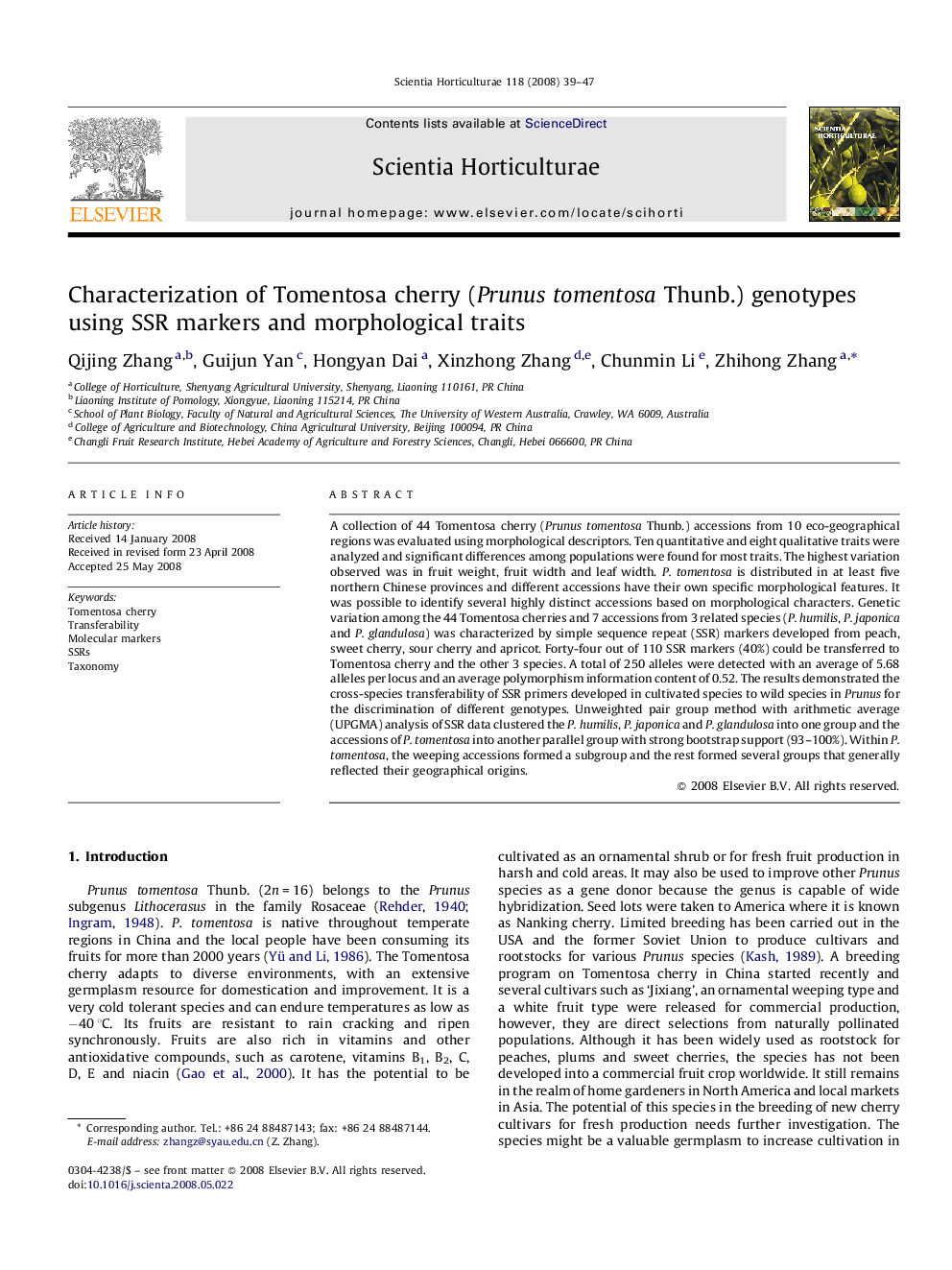| Article ID | Journal | Published Year | Pages | File Type |
|---|---|---|---|---|
| 4569483 | Scientia Horticulturae | 2008 | 9 Pages |
A collection of 44 Tomentosa cherry (Prunus tomentosa Thunb.) accessions from 10 eco-geographical regions was evaluated using morphological descriptors. Ten quantitative and eight qualitative traits were analyzed and significant differences among populations were found for most traits. The highest variation observed was in fruit weight, fruit width and leaf width. P. tomentosa is distributed in at least five northern Chinese provinces and different accessions have their own specific morphological features. It was possible to identify several highly distinct accessions based on morphological characters. Genetic variation among the 44 Tomentosa cherries and 7 accessions from 3 related species (P. humilis, P. japonica and P. glandulosa) was characterized by simple sequence repeat (SSR) markers developed from peach, sweet cherry, sour cherry and apricot. Forty-four out of 110 SSR markers (40%) could be transferred to Tomentosa cherry and the other 3 species. A total of 250 alleles were detected with an average of 5.68 alleles per locus and an average polymorphism information content of 0.52. The results demonstrated the cross-species transferability of SSR primers developed in cultivated species to wild species in Prunus for the discrimination of different genotypes. Unweighted pair group method with arithmetic average (UPGMA) analysis of SSR data clustered the P. humilis, P. japonica and P. glandulosa into one group and the accessions of P. tomentosa into another parallel group with strong bootstrap support (93–100%). Within P. tomentosa, the weeping accessions formed a subgroup and the rest formed several groups that generally reflected their geographical origins.
